
Women are running away from men for relationships with other women! Faux trend, or unexplored reality? You can point to the Lindsay Lohans and Cynthia Nixons of the world as evidence — tired or exhausted from or put off by dating guys, they turn to gal pals for love and affection — but there are plenty of less famous women whose relationships (and marriages) with men fall apart, and they end up in the arms of other women. Sometimes it’s a power thing (she makes more, he feels emasculated), sometimes it’s a fed up with guys thing (why are all men such dirtbags?), and sometimes, well, we don’t know why it happens. And what seems to be a most interesting revelation: While some women now dating other ladies always had some attraction to the same sex, plenty of lasses say it grew with the territory.
Perhaps you’ll find it surprising to see this topic explored in Oprah’s magazine, given it hits so close to home. (Though of course she and Gayle King are just BFFs, nothing more.) Or perhaps not: Oprah’s often given voice to women from all walks of life.

When it comes to Lohan, her string of well-publicized romances with men (Wilmer Valderrama, Colin Farrell, Jared Leto, Brody Jenner, Jude Law, Adrian Grenier) turned into her longest relationship yet with DJ Samantha Ronson, a lady. And while the stability of that relationship is up for grabs, her romance with Ronson hasn’t been plagued by the publicity of drug and alcohol binges like her boytoys have.
With Nixon, her relationship with husband Danny Mozes (the father of her two children) ended after 15 years before she became close friends, and then lovers with, Christine Marinoni, who met while Nixon was campaigning for public school causes in New York City.
How about we take this to the next level?
Our newsletter is like a refreshing cocktail (or mocktail) of LGBTQ+ entertainment and pop culture, served up with a side of eye-candy.
And Jackie Warner, star of Bravo’s Work Out, says she receives hundreds of letters from straight women who write in to share their special and one-off attraction to her. (Nevermind the part where Warner managed to “turn” one of her on-air trainers, Rebecca Cardon, for a brief relationship before they broke up and Cardon returned to men.)
The idea that women can swap men for women brings up endless questions about sexual orientation, from whether it’s genetic or situational to whether women’ opposite- and same-sex attractions are more malleable than men’s.
“People always ask me if this research means everyone is bisexual. No, it doesn’t,” says Lisa Diamond, PhD, associate professor of psychology and gender studies at the University of Utah and author of the 2008 book Sexual Fluidity: Understanding Women’s Love and Desire. “Fluidity represents a capacity to respond erotically in unexpected ways due to particular situations or relationships. It doesn’t appear to be something a woman can control.” Furthermore, studies indicate that it’s more prevalent in women than in men, according to Bonnie Zylbergold, assistant editor of American Sexuality, an online magazine.
In a 2004 landmark study at Northwestern University, the results were eye-opening. During the experiment, the female subjects became sexually aroused when they viewed heterosexual as well as lesbian erotic films. This was true for both gay and straight women. Among the male subjects, however, the straight men were turned on only by erotic films with women, the gay ones by those with men. “We found that women’s sexual desire is less rigidly directed toward a particular sex, as compared with men’s, and it’s more changeable over time,” says the study’s senior researcher, J. Michael Bailey, PhD. “These findings likely represent a fundamental difference between men’s and women’s brains.”
Meanwhile, the “experts” say these type of “alternative” relationships are on the rise. Or perhaps more accurately, they acknowledge people in these types of relationships are feeling more free to be open:
“Binnie Klein, a Connecticut-based psychotherapist and lecturer in Yale’s department of psychiatry, agree that alternative relationships are on the rise. “It’s clear that a change in sexual orientation is imaginable to more people than ever before, and there’s more opportunity—and acceptance—to cross over the line,” says Klein, noting that a half-dozen of her married female patients in the past few years have fallen in love with women. “Most are afraid that if they don’t go for it, they’ll end up with regrets.”
All of which stirs some interesting thoughts, such as:
• The anecdotal evidence suggests these relationships are the territory of women who are “in the second part of their lives,” as Warner describes it. They’ve been married and divorced, or their kids are grown. Are these the relationships we know more about simply because there’s a definitive “switch” from male partners to female? What about women who considered themselves to be straight, who never found a guy to be “the one,” and never settled down, who found female partners later in life?
• Many women who find themselves changing things up are attracted to women for what we could call their “masculine” qualities — yes, we mean “butcher” — but also their “feminine traits,” such as their caring and affection. But a relationship of this sort also means having sex, so where and when does the brain make the change, or “evolve,” to create a sexual attraction in addition to the emotional one?
• Is it fair to label these women as lesbians? Is that description too compartmentalized? We can talk about the Kinsey scale and “pansexualism” at length, but women who turn to other women later in life … are they straight girls who are one-off lesbians? They just needed to find the girl woman?
As Mary A. Fischer writes in O, The Oprah Magazine:
This idea, that the libido can wander back and forth between genders, Diamond admits, may be threatening and confusing to those with conventional beliefs about sexual orientation. But when the women she’s interviewed explain their feelings, it doesn’t sound so wild. Many of them say, for example, they are attracted to the person, and not the gender—moved by traits like kindness, intelligence, and humor, which could apply to a man or a woman. Most of all, they long for an emotional connection. And if that comes by way of a female instead of a male, the thrill may override whatever heterosexual orientation they had.
Photos: Disney; Splash News




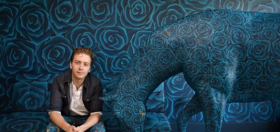


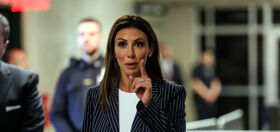

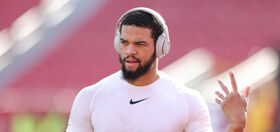
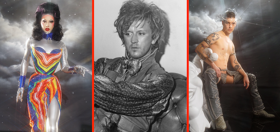


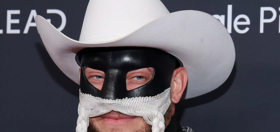

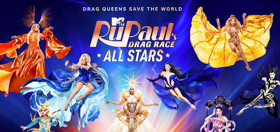


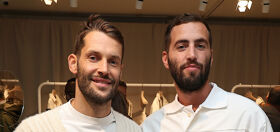

Ali
Why are the choices “are they straight girls who are one-off lesbians?” as if there’s no other option? Maybe these people are bisexual and are finally just acting on it.
Eclipse
I’ll admit the start of this post worried me- I thought it’d be another “those wacky lesbians!” kind of post that crops up often on gay blogs.
But, this was terrific, and the bulleted thought points are all good things to mull on.
To address the question of sexual attraction “evolving”- I think it’s about women’s sexual pleasure, not genital preference. Penetrative sex is only a small part (no pun intended) of women’s sexual pleasure. Most women know that it’s really all about outercourse, oral sex, and manual sex. Add to that toys and vibes, and penis-less sex is waaaay fun. There’s little a man can do that vibes and strapons can’t do better. So, when a woman falls in love with the person (not the gender), the sex naturally follows.
I think it’s also a learned response. Give a girl enough mind-blowing sex, she’ll keep coming round for more. Thus, sexual attraction is born.
And finally, I’ll admit, pussy can be an acquired taste, but, like beer, once you get the sense of it- it’s totally, totally awesome.
KellyD
Late in my thirties, I fell in love with a woman. I was married to a man, had kids, had always dated and liked men. But I fell in love with this new person who happened to be a woman. I left the world I knew, all the financial security and safe suburban lifestyle, to be with her. That was one year ago. To this day, we are still crazy in love and happier than ever. Do people judge me, misunderstand me and wonder how this could have happened? Do I? You bet.
Sometimes things just happen. Why does anyone fall in love with anyone? You can’t explain it…
Lin
Although this is a well-written little article, I fear it just adds to the sad mentality that has infiltrated our society in the past few decades. Gay haters/right-wingers/the super-religious read this, and it’s simply more fuel for their fire.
Who gives a CRAP why, or when, or how someone went to the gay side?! Fact is, if they are in a sexual relationship with a person of their same sex, they are gay. At that moment, forever, whatever.
I’m sick of these types of lets-explain-it-away arguments, which come off casual but are in fact a true detriment to gay people everywhere.
Distingué Traces
I think this is one of the giant differences between male and female sexual function.
Heather
I’m going to have to agree with the first poster. Why is bisexuality drop kicked from the options list and instead ‘are they one-off lesbians?’ asked. This doesn’t have to be an either or situation. 🙂 Some people really just don’t care as much if it’s a guy or girl. You fall in love with who you fall in love with.
The Lesbian Mafia
I don’t think women turn to women because they are tired of guys. I think they turn to women because they are gay. Rather, lesbianism has nothing to do with men.
Lindsay is gay because she is gay and her drug addiction probably has to do with her having to deal with America loving to rip these young girls to shreds.
Cynthia Nixon is a lesbian because she was born that way I presume.
msim
These studies are geared towards standardization.
Some women are born gay and accept it, some of born gay and deny it for a time; some will deny it their entire lives; some are not even aware of it; some are mostly straight and will fall for 1 woman; some are bi but identify as lesbians; some are bi but will mostly live as het, etc.
Stats regarding the love/sexuality of human beings are closer to 25% gay, 50 bi, 25% straight. Sexuality is one thing but actual desire is not easy to put in tight box.
I’m a lifelong lesbian but I seriously find some men way more attractive than some women.
The cast of Noah’s Arc = Hotness.
The cast of Exes and Ohs = Not.
Does it mean I am less gay and secretly desire men? No. Simply put: desire includes a lot more things than just gender.
Ben
@Lin: “I’m sick of these types of lets-explain-it-away arguments, which come off casual but are in fact a true detriment to gay people everywhere.”
Lighten up, Francis.
no one’s trying to explain it “away”. They’re trying to explain it. Period.
I think it’s fascinating how this will eventually wash in the whole “it’s a choice”/”it’s not a choice” la-la that’s going on these days.
And a “detriment” and “more fuel for their fire”? meh, maybe short-term among some right-leaning people, but eventually people will not care about the choice thing. They will view it as a right. Eventually.
Lin
@Ben:
Don’t worry, I’m calm.
All good points. Sadly, many of the right-leaners you speak of catch a scent of “lesbians aren’t always actually ‘gay'” are run with it until we’re all labeled fake-gays, including you boys, and equality is null and void.
This is my fear, personally, and you really don’t have to agree with it. Francis.
jason
The notion that women are more bisexual than men is pure crap. It’s a phony notion that is put out by the porn industry, and is designed to prop up the sleazy straight guy fetish for girl-girl action. Unfortunately, many so-called sex professionals have adopted the porn industry’s model of human sexuality, and are helping to spread the lie that females are more bisexual than men.
Don’t forget also that women use their sexuality as a marketing ploy. Therefore, it logically follows that women will claim to be bisexual for the purpose of media coverage and pandering to the sleazy straight guy fantasy, thus giving the impression that there are more female bisexuals than male bisexuals. I am personally sick and tired of these women.
jason
Unfortunately, the porn industry has distorted human sexuality to such an extent, it has produced a social disparity in the way female bisexuality is viewed relative to male bisexuality. In 99.9% of porn movies containing both genders, the women are allowed to be bisexual but the men aren’t – think about the distorting influence this has had on the perception of human sexuality in our society.
That’s why we now have a bisexual double standard – female bisexuality is considered “hot”, male bisexuality is considered “not hot” or “down low”. Think about how damaging this is to men. We shouldn’t allow the porn industry to get away with it.
Eclipse
@jason: I’m not sure if your argument is that (a) most women aren’t bisexual and are lying or (b) more men are bisexual than they admit.
These are two different arguments, and you seem to be blaming bisexual women for the lack of bisexual men.
Nancy
OK. Two years ago I fell in love with a woman and we had sex for about a week and on the last night she stayed all night and we went all the way. Afterwards, she quit me and we never did it again. I never told my husband about this because I just looked at this as a very hot steamy summer fling. He thought we were just girlfriends and was at a conf when the sex went down. Sometimes she sends me mean email messages and asks me if I am still a lesbian. I always say ‘you were my only woman.’I haven’t done it again and I just wanted her. Am I a lesbian?
coolcubes13
@Lin: ahhhh another idiot
coolcubes13
@Lin: you’re the one explaining something away